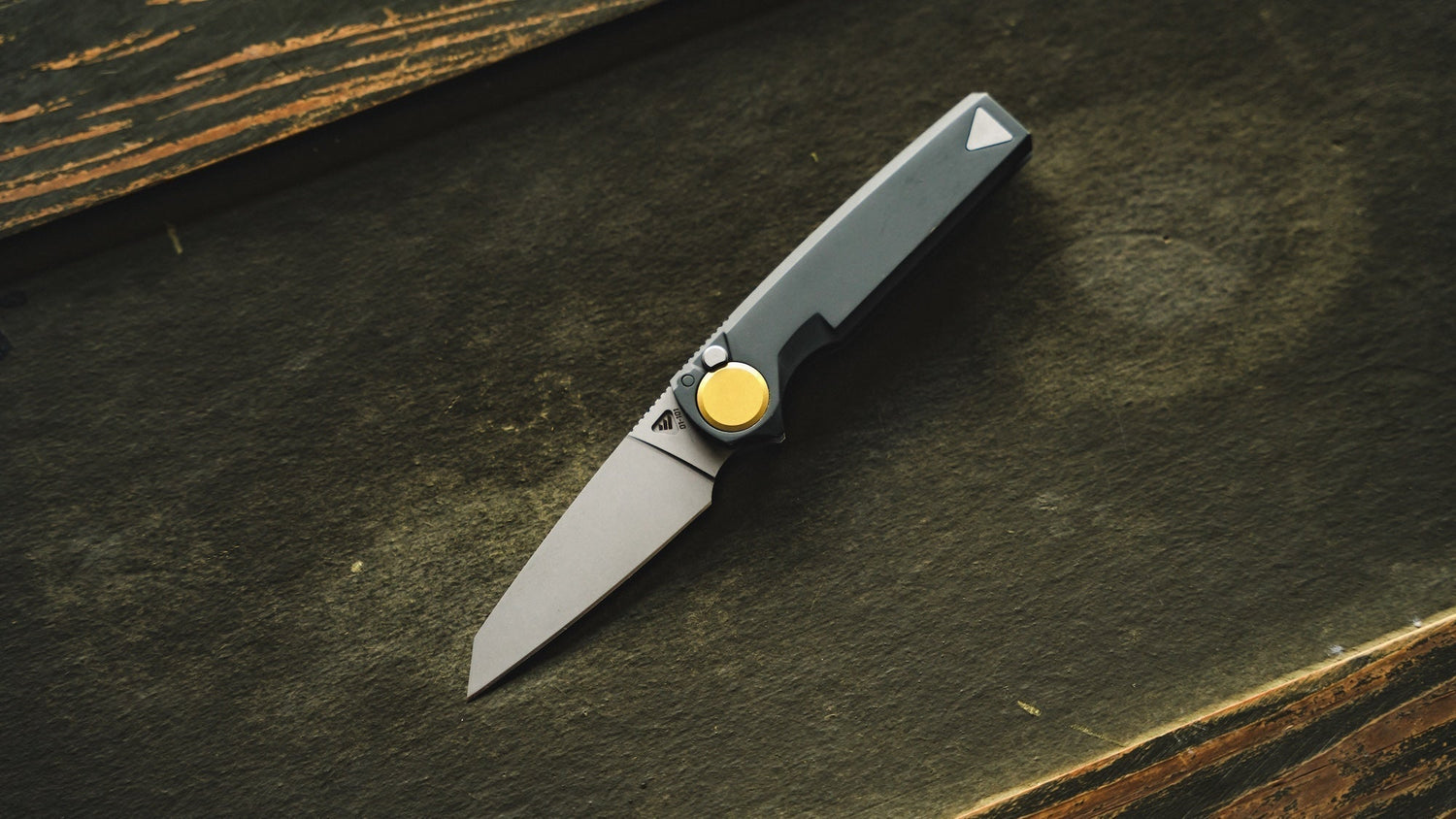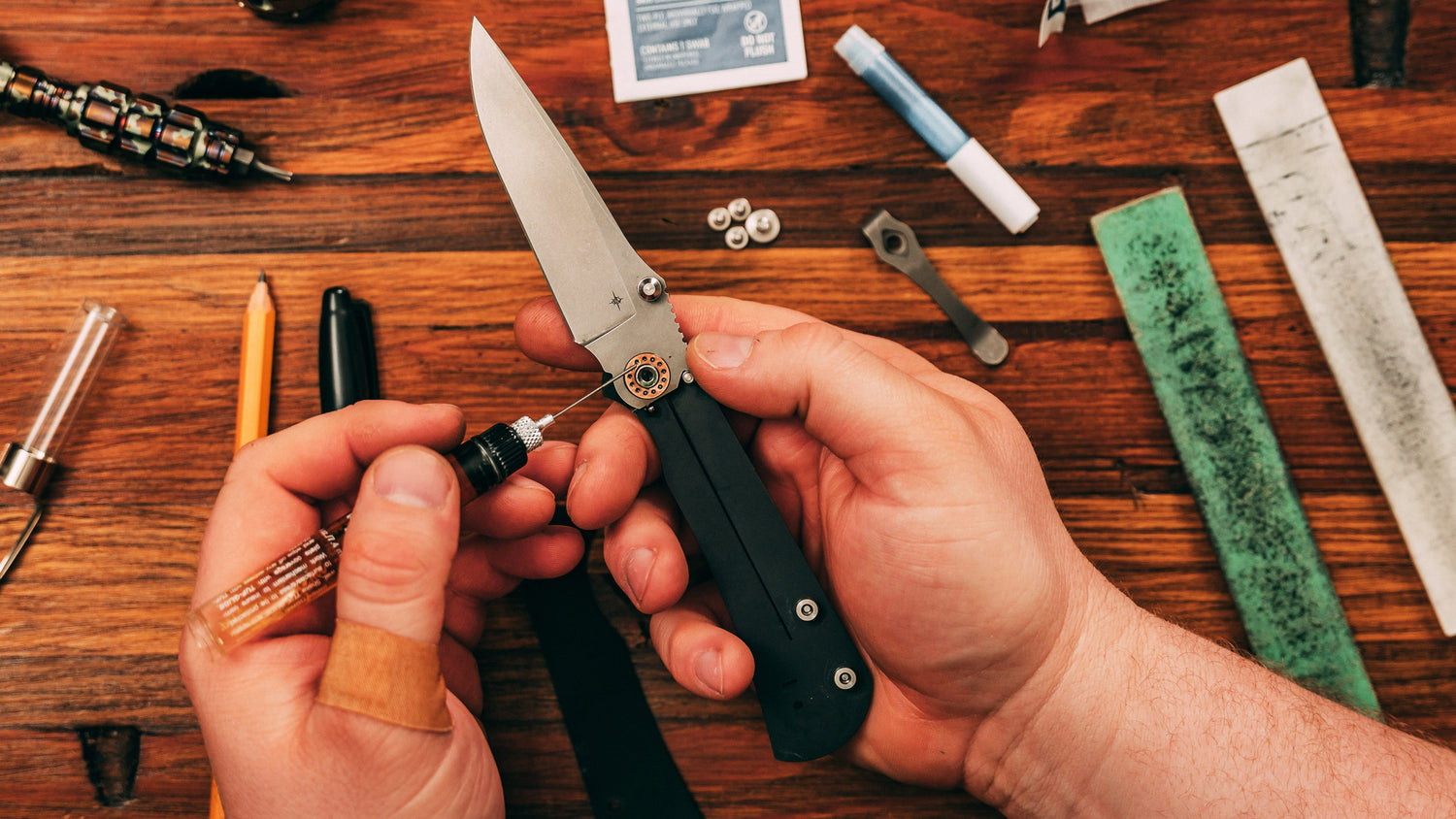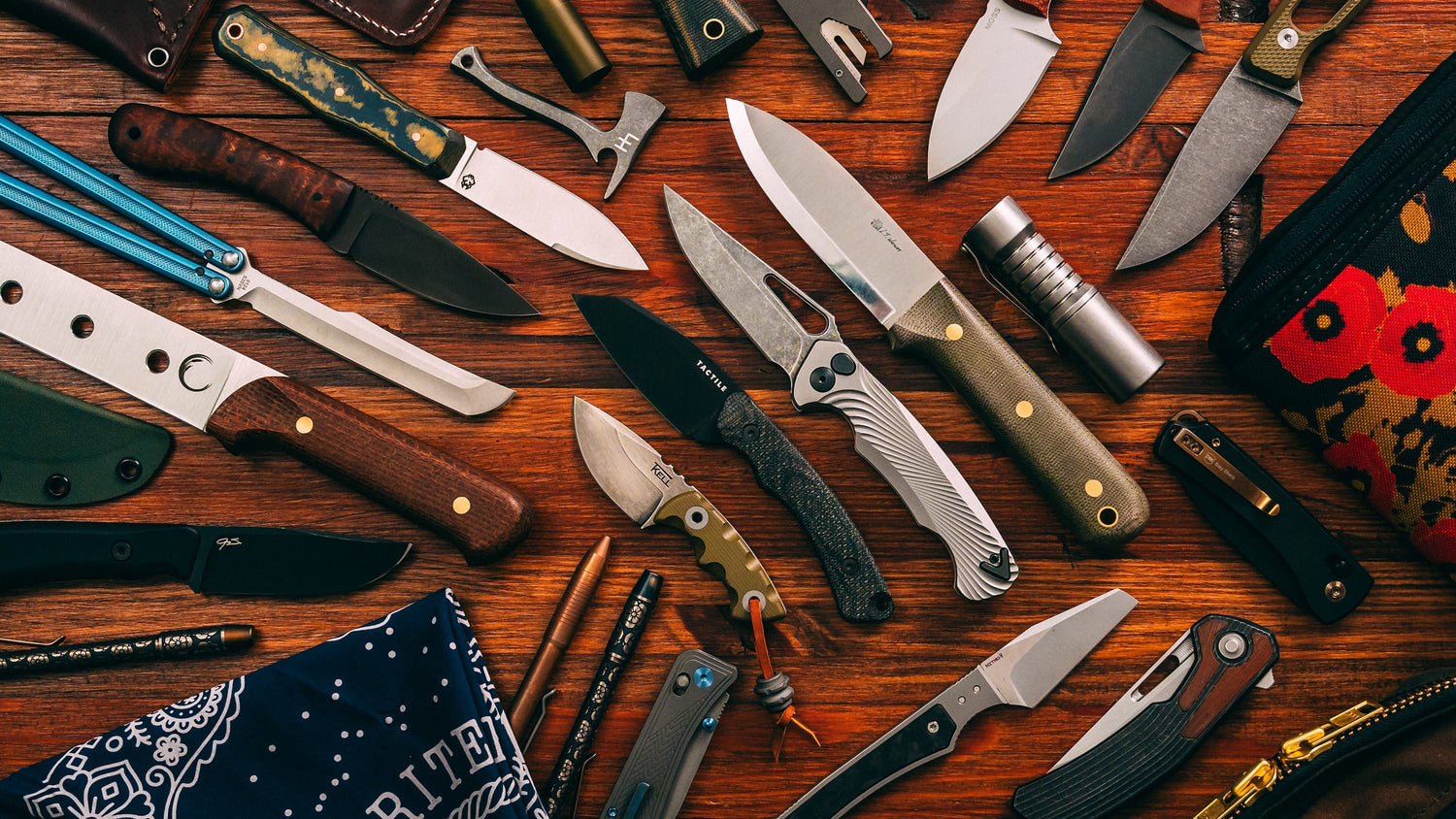Does your everyday carry knife not feel as good as it once did? An EDC knife is a tool, and just like any great tool, it needs some maintenance from time to time. Poor action, rust, or a loose blade are all common problems that can be fixed easily and quickly. Some problems left unchecked can actually be dangerous.
These simple fixes will restore your knife pretty close to its original glory without requiring any real elbow grease or specialized tools.
Tools You’ll Need
These fixes only require simple tools:
- Torx driver set (T6, T8)
- Knife lube (or mineral oil)
- Flitz metal polish
- Graphite pencil or Sharpie
- Alcohol wipes

Fix Blade Centering
In most cases, an off-center blade is just cosmetic, but it can also be indicative of another problem that can cause undue wear. Follow these steps to bring it back to the center:
- Quick Fix: Tighten the pivot screw slightly; this will often shift the blade into place.
-
Advanced Alignment:
- Open the blade.
- Apply gentle pressure toward the handle side the blade favors.
- Loosen the pivot screw, then loosen the body screws.
- Retighten the pivot screw first, followed by the body screws.
Tip: A dab of blue Loctite on the pivot screw can prevent future misalignment. (Avoid red Loctite, as it's virtually permanent.)

Fix Blade Play or Lock Rock
A loose pivot scew is typically the culprit of side-to-side blade play. This can be especially dangerous if the pivot screw works its way out entirely.
- Side-to-Side Play: Tighten the pivot screw.
- Up-and-Down Movement (Lock Rock): Proceed at your own risk, as this can and will void your manufacturer's warranty, especially if you over-extend the lock bar. Gently adjust the lock bar by disassembling the knife and bending the lock inward slightly. Take it slow and err on the side of too little adjustment. It's easier to go slow and nail it in a couple of tries versus over-bending the lock bar and permanently damaging the knife.

Improve Action with a Deep Clean
If your knife doesn't open and close quite like it used to, it's probably in need of a good, deep clean. If you want to skip the disassembly below, you can first try blowing the internals out with compressed air and adding a drop or two of lube around the pivot. Otherwise:
- Disassemble the knife.
- Clean all parts with rubbing alcohol or alcohol wipes—blade, washers, screws, etc.
- (Optional) Polish metal washers with a ceramic plate and a strop with honing compound for extra smoothness.
- Reassemble with a drop of oil on the washers or caged bearings and detent ball.

Fix a Bent Pocket Clip
We've all been there. You walk too close to a door frame and…SNAP! Your pocket clip catches and bends out.
This needs to be addressed because a loose or bent clip with little to no retention will lead to a lost knife. To fix it:
- Unscrew the clip from the handle.
- Temporarily attach the clip backward onto your knife.
- Use the handle as leverage to bend the clip back into shape.
- Reinstall the clip in its original position.

Remove Rust From Knife
Rust happens–even on stainless steels–especially in the summer in more humid parts of the world. Don't worry, though. Rust is one of the most common and easiest things to fix:
- Apply a dab of Flitz metal polish to the affected area. Rub it gently with a microfiber cloth.
- Alternatively, try Barkeeper’s Friend or vinegar for tougher rust. Be cautious around engraving—abrasives can damage it.

Stop Lock Stick
If your knife lock is more difficult to disengage than it should be, it's called lock stick. This can happen for several reasons, but the temporary fix is very simple:
- Rub graphite from a pencil or Sharpie on the blade tang (where it contacts the lock bar).
This fix isn't exactly permanent. It's adding a temporary lubricant to the lock interface. Eventually, it will wear away. Sometimes, this is all you need for the lock interface to sort of "settle in" with a new knife. If not, just reapply the graphite or Sharpie to the lock interface.

Maintain the Edge
A dull knife is a dangerous knife. Fortunately, keeping your knife sharp and slicey is easier than you may think and, no, you do not need a pull-through sharpener.
Most of the time, you don't even need to sharpen your knife regularly. You just need to maintain the edge. My favorite tool for this is the Work Sharp Guided Field Sharpener. It has everything you need to perform the simple maintenance below:
- Pass the edge of your knife along a ceramic stone roughly 10 times per side, alternating every few strokes and working your way down to once per side.
- Repeat the same process on a leather strop with honing compound.
In a pinch, the top edge of a car window or the inside of a leather belt works as a makeshift strop.
Bonus Tips for Maintenance
- Keep screws tight with a small dab of blue Loctite.
- Store knives in a dry space to prevent rust.
- Regularly clean and oil moving parts for smooth action.





